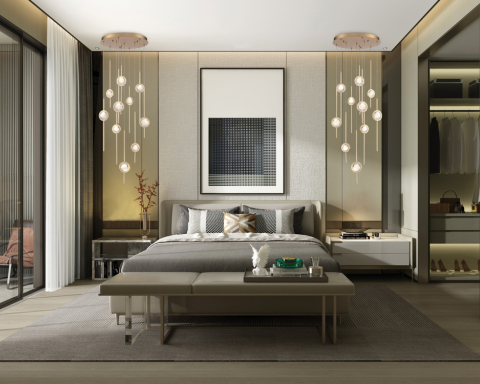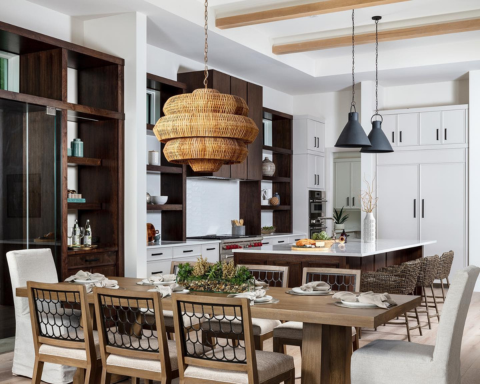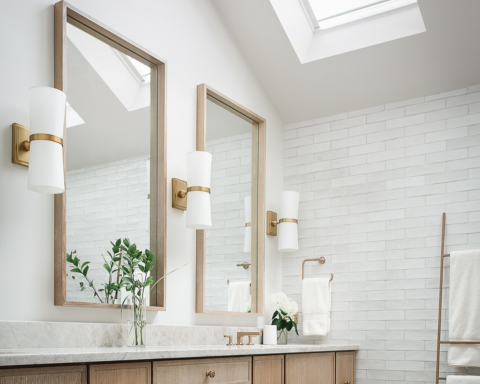Free Ground Shipping on Orders Over $49 Details & Exclusions Excludes Curb Side Delivery (LTL). Lower 48 United States Only.
Jan 28, 2020
7 Accent Table Lamps to Upgrade Your Room Décor
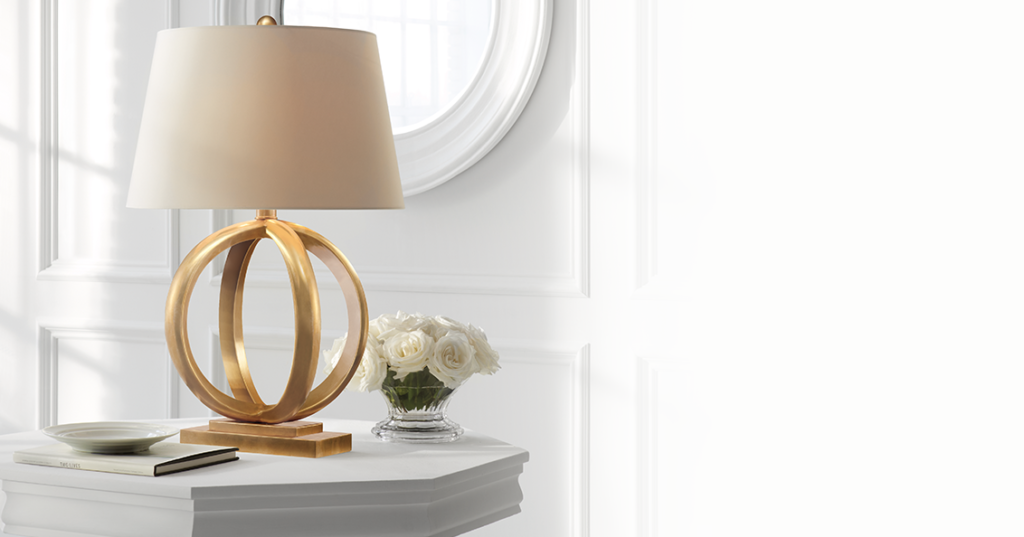
Take a look around your home. Do you see any dark spots? Maybe there’s a shadowy corner in the living room or your bedroom goes pitch black when you turn off the ceiling light. One central fixture is hardly ever enough to illuminate a full space. So while it’s fun to shop for a dining room chandelier or to pick out pendants for the kitchen island, it’s important to learn how to plan your accent lighting. Luckily, you have a lot of options in this arena, one of which is accent table lamps.
With their mix of materials and well-balanced structure, accent table lamps add light, dimension, and style to any room in your house. The key is understanding the room’s function and keeping an eye on proportions. If you follow the tips below, you’ll have no problems finding accent lamps to upgrade your room’s décor.
Prioritize Proportions and Scale
Establishing the right scale and proportion is critical to creating a room that is both functional and visually appealing. When designing a house, architects and design professionals give a great deal of thought to these elements. But that’s hardly the end of it. Everything in your home should keep the scale balanced, including the knick-knacks you choose for your built-ins and the accent lamps you put on your tables.
For reference, a standard table lamp is about 22 inches tall, measuring from the bottom of its base to the top of its shade or finial (if it has a finial). However, the scale and proportion of your room may dictate a different size entirely.
To determine the right sized table lamp for your space, you’ll need to account for three key factors:
- The room’s ceiling height
- The room’s overall size
- The targeted table’s dimensions
Ceiling height:
Today’s standard ceiling height for residential construction is nine feet. With this kind of headspace, you can use lamps that are anywhere between 20 and 30 inches. For basements or other rooms with low ceilings, try not to go any higher than a 26-inch table lamp. Taller fixtures will take over the space and might even create an awkward sightline. The last thing you want is for a lamp’s light to hit you at eye level when you’re sitting down.
Of course, vaulted living rooms with 12-foot ceilings can handle bigger accent lamps. Consider a fixture 24 to 30 inches or above, provided the lamp is still in proportion with the table and other furnishings.
Overall room size:
In addition to ceiling height, make sure you calculate your room’s total square footage. According to the International Residential Code of 2018, the average gross floor area for most rooms should be at least 70 square feet. The actual size varies depending on a home’s total square footage.
For a starter home in the U.S. with 1,200 to 1,500 square feet, the living room might take up 150 to 200 square feet. You can also think of that as a 12-by-14-foot room. These smaller spaces would be better accented with shorter table lamps – something 20 to 24 inches high – so as not to overwhelm the room.
That said, a home with 2,000 to 2,900 square feet might have a living room with as much as 320 square feet, measuring about 16-by-20. This is a moderately big space, which can accommodate larger furnishings and accessories. Here, you might add an accent table lamp that falls in the 24-to-30-inch range. Of course, if the ceilings are tall, you could go even higher.
For rooms closer to 400 square feet, you’ll definitely want to scale up. These spaces can handle lamps that measure 30 inches high or above, even with the standard ceiling height.
Table dimensions:
The third factor to throw into the mix is your table – or nightstand, dresser, desk. Obviously, you don’t want a lamp that overtakes the furniture on which it sits. Ideally, the lampshade will be contained within the perimeters of the surface – not spewing over the edges.
Another dimension to consider is the table’s height. When you add the table height and lamp’s height, the total should fall between 58 and 64 inches. This ensures light hits at just the right level for reading or carrying a conversation. It will also help keep the overall scale in check. A good rule of thumb is to make sure the lamp is no more than 1.5 times taller than the table or desk on which it sits.
Calculate How Much Light You Need
The unit used to measure light is called lumens. Note: the number of watts tells you how much energy (aka electricity) a bulb consumes in order to produce a certain number of lumens. Lumens, however, are the unit that describes the light bulb’s level of brightness. The higher the lumens, the brighter the light. For reference, a standard 100-watt light bulb produces about 1,500 – 1,700 lumens. More energy-efficient options, like compact fluorescent bulbs (CFLs), can produce the same amount of lumens with fewer watts.
How many total lumens you need depends on the function of the room. High-functioning spaces, like your kitchen and bathroom, require more light. HouseLogic breaks down total lumens per room:
- Kitchens: 5,000 – 10,000 total lumens
- Bathrooms: 4,000 – 8,000 total lumens
- Bedrooms: 2,000 – 4,000 total lumens
- Living rooms: 1,500 – 3,000 total lumens
- Dining rooms: 3,000 – 6,000 total lumens
- Home offices: 3,000 – 6,000 total lumens
Of course, these ranges may increase if you have weak vision, lighting obstructions or specific task areas that call for more light. In any case, make sure that your accent table lamps contribute to the room’s general lighting needs.
Now that you have the foundation for finding an elegant, effective and well-proportioned table lamp, it’s time to dig deeper into your options. You understand that different rooms require more or less light, but there are also special considerations for design. Below, we outline exactly what to look for in accent table lamps – from the shade to the bulb. That way you can easily narrow down the right fixture for your bedroom, office or living room.
How to Choose Accent Table Lamps for Bedrooms
The Shade
Your bedroom should be your sanctuary – and you should accessorize it as such. That means keeping the color palette cool, using natural materials and minimizing clutter or distractions. Therefore, the best lamp shades for the bedroom are ones made of paper or linen. Patterned lampshades are taboo, as they will busy your brain right before bedtime. Instead, choose solid off-whites and light greys. These colors will soothe your senses and prepare you for sleep.
The Base
You don’t have to get too specific when it comes to the base of your bedroom table lamp. Most nightstands have ample surface area for a wide fixture. In fact, bedside tables were designed to hold a lamp and not much else. So don’t be shy about choosing a chunkier fixture, provided it follows suit with the rest of your room’s design style.
The Bulb
The bulb you put in a nightstand light fixture will be much different than the one you use in a desk lamp. A bedroom lamp can operate with lower lumens, because you don’t need the piece to illuminate the entire room. For a bedroom lamp you might use for reading, about 400 to 800 lumens per light is sufficient. Remember, your entire bedroom only needs about 2,500 lumens.
The bulb’s color tone matters, too. Color temperature is based on the amount of yellow there is in the light’s glow. This is measured in Kelvins (K). For something with a soft-and-calming yellow tone, you’ll want a bulb lower on the Kelvin temperature scale. Somewhere between 2500K and 3000K is warm enough for a bedroom.
Dimmability is another factor you might consider. This will allow you to adjust the level of light depending on what you need and when. If you’re curled up with a good book, you can turn the lamp to maximum brightness.
The Possibilities
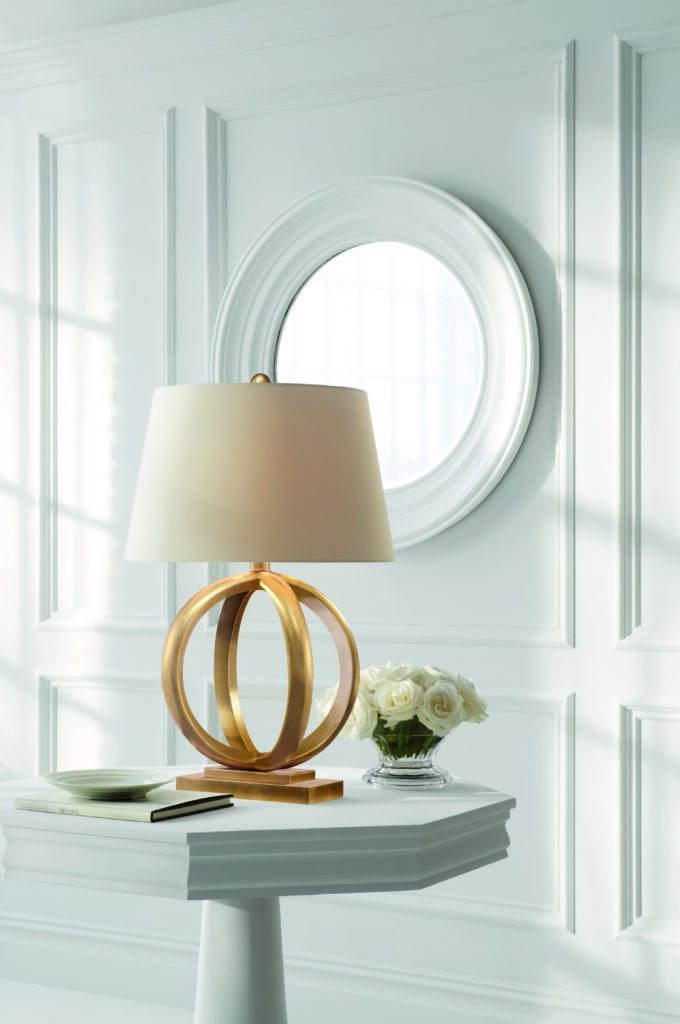
E.F. Chapman Quattro Table Lamp by Visual Comfort and Co.
Interlocking rings are a simple design that symbolize unity and infinite love. It’s the perfect message for your master suite, which is why you and your significant other should have a Quattro table lamp on your respective nightstands. The bonded brass rings will not only bring you closer as a couple, but the matching set will tie the whole room together.
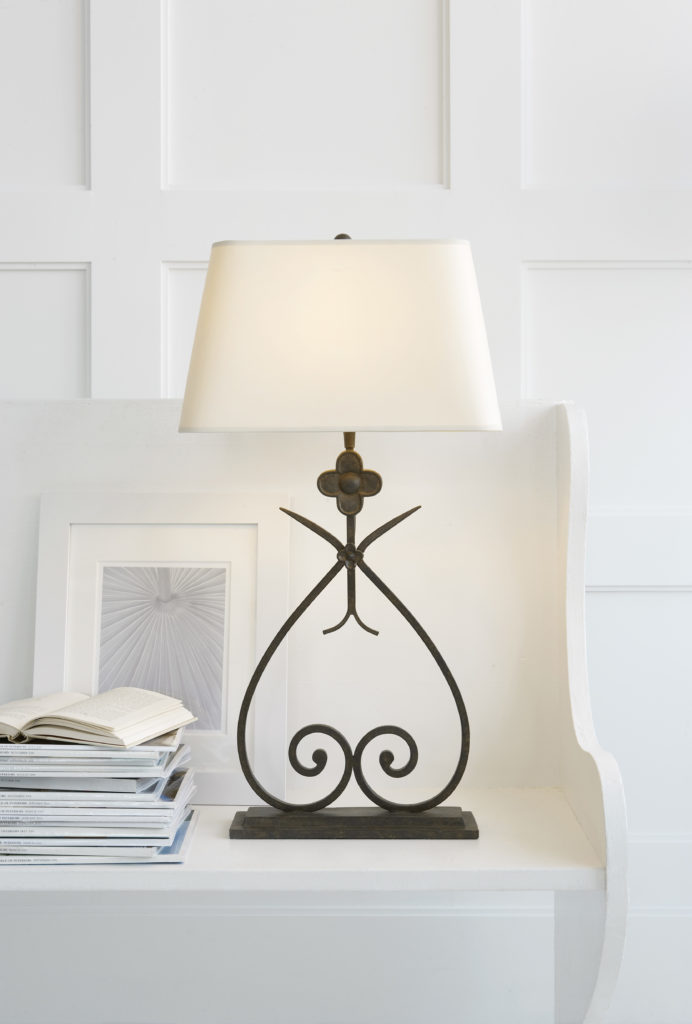
Suzanne Kasler Harper Table Lamp by Visual Comfort and Co.
If you really want to make a declaration of love, the Harper table lamp says it all. The rusted iron base is crafted into an upside-down heart with floral accents that seem to be blooming. Choose between the natural paper shade or taupe linen shade – both organic materials that feel calm and cozy. Add even more warmth with the gilded iron finish. It has a lovely gold tone that would instantly elevate a transitional-style bedroom.
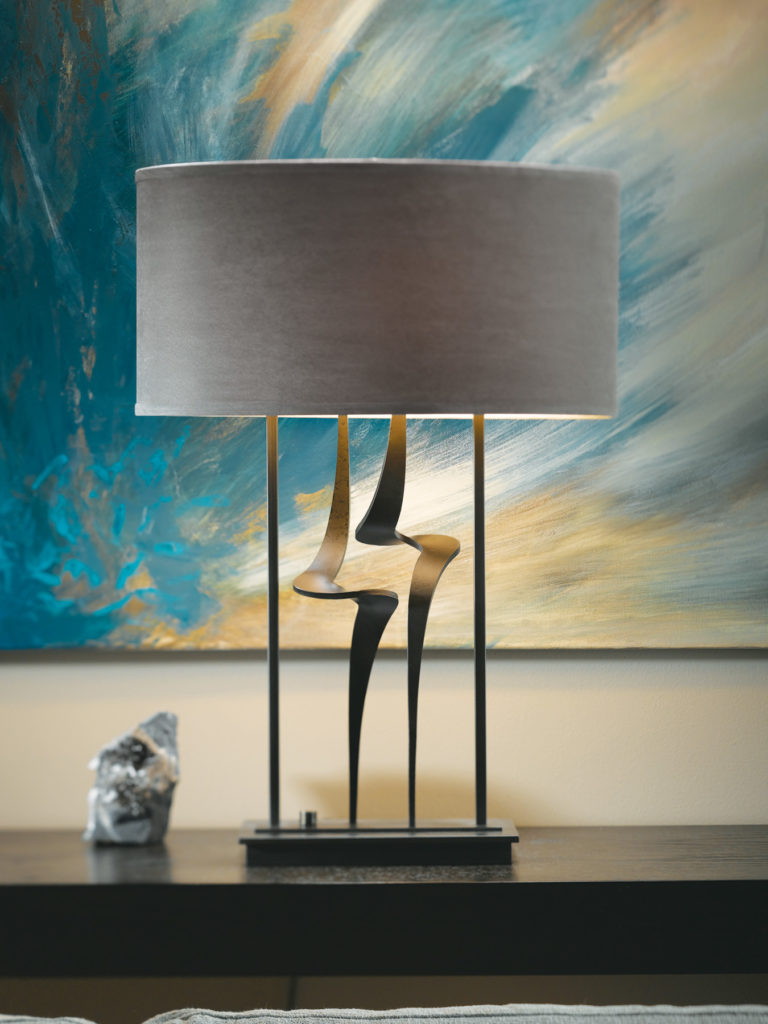
Antasia Table Lamp by Hubbardton Forge
There’s nothing that will upgrade your bedroom faster than this artful, hand-forged table lamp. The Antasia features two exquisitely crafted swivels, which are framed and highlighted by two perfectly straight bars on either side. It’s a simple design with just enough visual interest to catch your eye. The best part is this lamp comes in several different finishes, so you can coordinate with your bedroom suite and tranquil color palette.
How to Choose Accent Table Lamps for the Office
The Shade
Whether your office has a sense of modern style or not, your accent lamp should. The shade, in particular, should take on a minimalist design. Look for something clean and simple; no heavy textures or wild patterns, as these will only draw your attention away from the work in front of you. In fact, you might consider a lamp with no shade at all. Exposed Edison light bulb fixtures are a trendy choice, as are geometric shapes like a glass globe. Any lamp that delivers less fuss and more light is a stellar option for your office.
The Base
You’ll want the base of your office lamp to also be small and simple. The goal is to maximize your workspace. While you need the extra light source, you do not need anything taking up precious real estate. As for the height of the base, keep it proportional to the room as a whole. Just be sure the light sits high enough above your desk that it spreads across the entire work surface. The whole purpose of accent lighting is to get rid of dark spots and shadows.
The Bulb
For your office lamp, aim high on the lumens. You need a powerful source of light in order to pull off long hours of consistent work. Generally speaking, 400 – 450 lumens is enough for reading and writing. If your work involves focusing on fine details, shoot for around 800 lumens to get the light you need.
The color temperature of your office lamp should also be set pretty high, somewhere between 5,000 and 6,000 Kelvins. Your brain will function optimally with a bright white light. The bright white color mimics natural daylight, which helps prevent production of the sleepy hormone melatonin. That daylight effect is best produced by halogen bulbs, but you can achieve a similar tone with LED lamps.
The Possibilities
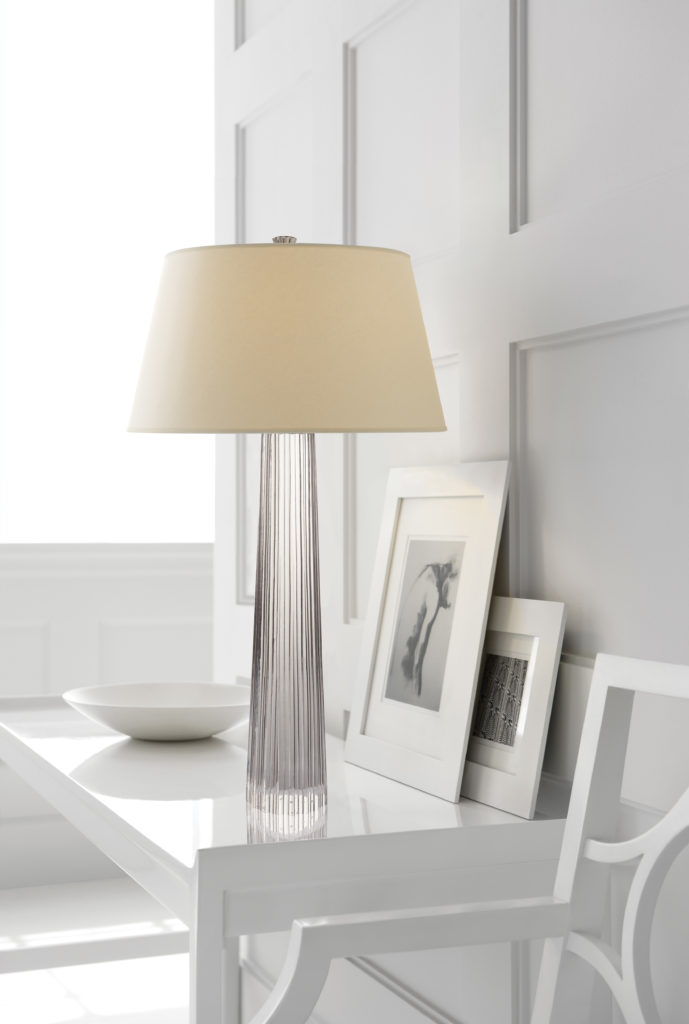
E.F. Chapman Fluted Spire by Visual Comfort and Co.
Other than maybe a miniature paperweight, where else do you find crystal accents in an office? That’s what makes the E.F. Chapman Fluted Spire an exceptionally elegant choice. Its long, slender base comes with a crystal finish that only adds to the sleek design. Of course, this piece has some function to its form. With such a narrow base of support, the Fluted Spire will keep your desktop free and clear for more important things – like a computer monitor or folder filing system.
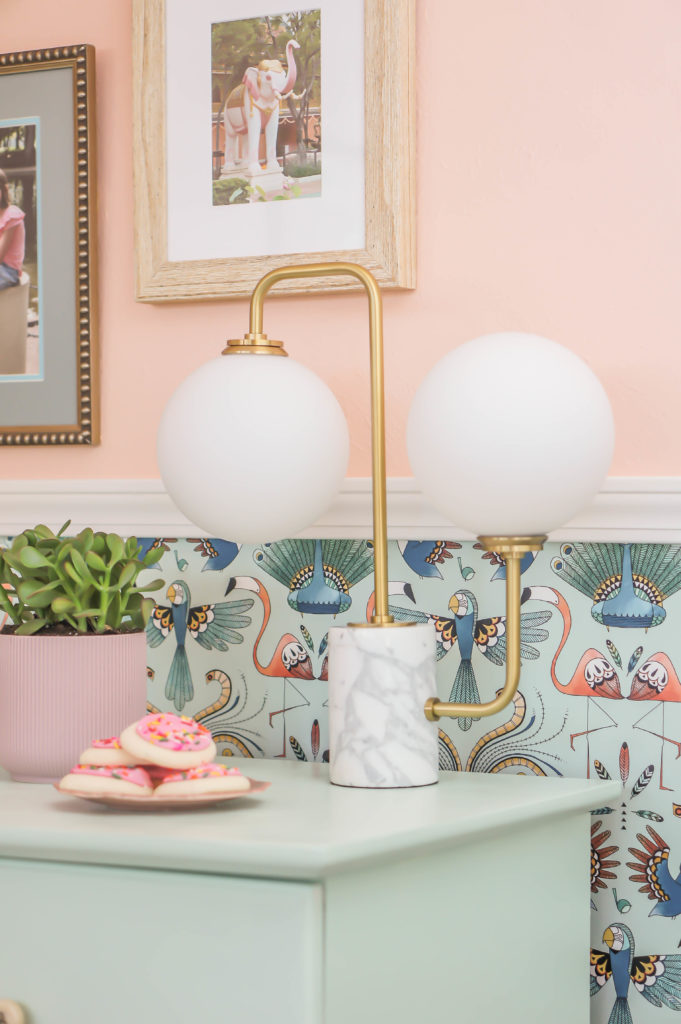
Mia Table Lamp by Mitzi
The Mia table lamp is proof that you can have sophistication and spunk all in one. It takes high-end materials like marble, etched glass and polished nickel and gives them unexpected personality. The square turns and bubbly glass shades in this table lamp will perk up your office, making work feel a little less like, well…work.
How to Choose Accent Table Lamps for the Living Room
The Shade
In the living room, you can afford to choose bold, decorative lamp shades. You not only have a lot more square footage to fill, but you have the freedom to flex your creative muscles. Your living room can be loud – literally and visually. After all, it’s the main gathering spot for your family. This is where everyone chit-chats, watches TV, plays games and lets loose. Your living room décor should encourage all this activity – and more. In other words, don’t be afraid of non-traditional materials, like Tiffany glass or woven metal. You can also explore unique shapes and forms.
The Base
The same rules apply to the base of your living room accent table lamp. Think outside the box, while staying within reach of your overall style. It’s one thing to be creative and another thing to be out of bounds. Let the rest of the living room guide you to a complementary lamp. The shape, material and color you choose should be echoed in your furnishings or other home décor items.
The Bulb
Unless you’re looking at reading lamps for a cozy nook in your living room, you don’t need the bulb to produce more than 450 lumens. Living room accent table lamps are meant to eliminate shadows and complete the overall look and feel of your design. They help set the mood with their light and style.
That’s also why the Kelvins can remain low. You want to aim for around 2,700 Kelvins, which will give you a nice soft white. Though not the most energy-efficient, incandescent bulbs are great at providing a warm glow for your living room.
The Possibilities
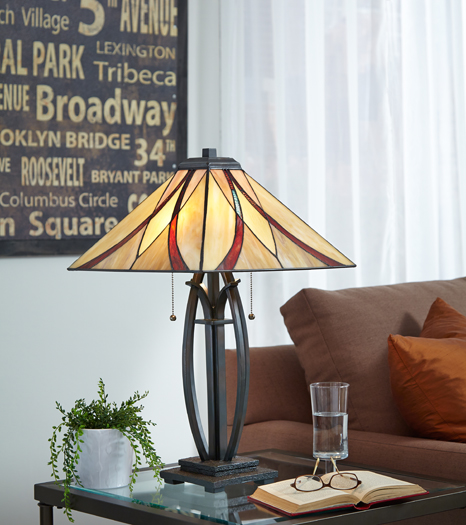
Ashville Table Lamp by Quoizel
You can’t miss a Tiffany glass table lamp. Their colors and patterns are always striking, but this one is especially tasteful. Notice the beautiful symmetry from the feet of its base to the four-sided lamp shade. Even the wild, uneven sections of glass come together in a repeating pattern that mirrors the curves you see in the bronze finish. With such a balanced, poetic piece, you won’t have to think twice about proportions.
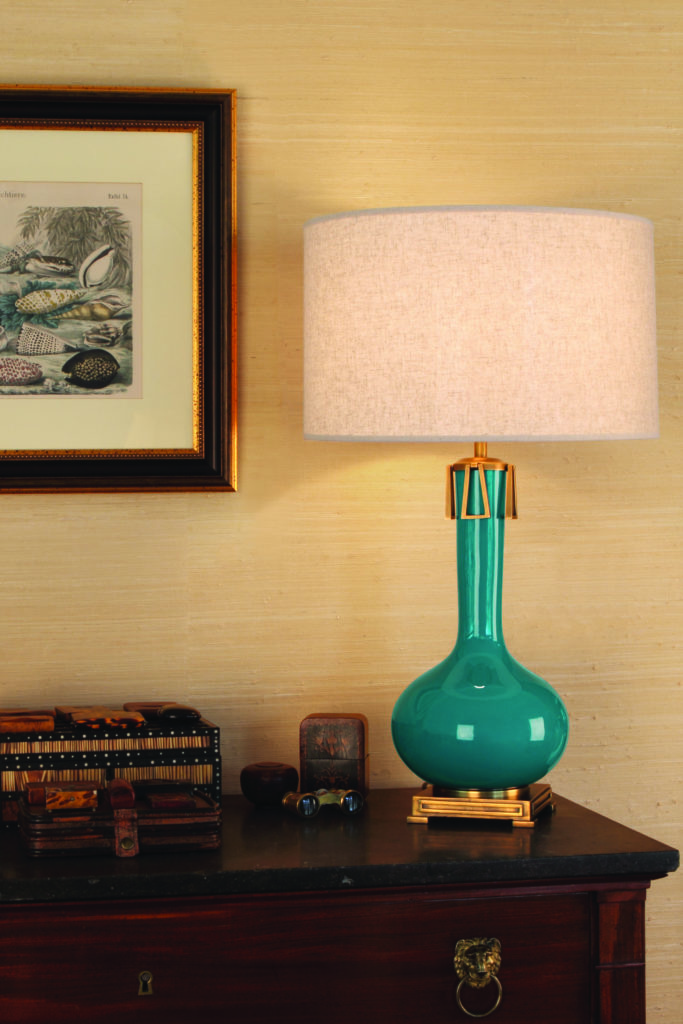
Athena Table Lamp by Robert Abbey
Sometimes, just a pop of color is enough to make a statement. With the Athena, you get a beautiful turquoise blue accent that’s as bold and memorable as the Greek goddess for which this lamp is named. Place this piece next to your keepsakes from around the world, and people will have to ask if there’s a story behind it.
Follow the Light
Accent table lamps are some of the most diverse light fixtures. The range of shapes, sizes and styles is so wide it may seem impossible to select just one. That’s why you have to narrow your focus by room and function. Once you know where the accent lamp is going and why, the light bulb will turn on and you’ll know exactly how to find that missing piece.

